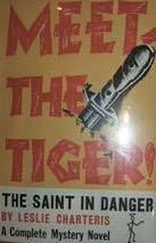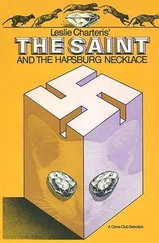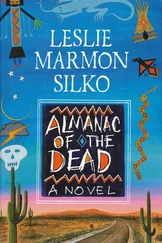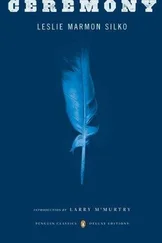The distribution of the pieces of the turquoise ledge may reveal its location to be somewhere below the place where the main road crosses the big arroyo. I don’t think the ledge occurs higher in the Tucson Mountains.
My speculations and guesses proved to be wrong. I walked up the arroyo higher into the mountains far above the main road crossing and I found pieces of rock with turquoise streaks. I even found a small turquoise rock near the place the cottonwood used to grow higher in the mountains.
When I was twelve, Great Grandma A’mooh’s baby brother, Robert Anaya, gave me a ring of oval green and brown turquoise in an old Navajo silver setting. He was blind by then and he used to cry from happiness as he embraced us children. We always stopped at his house in Paguate on our way deer hunting so he could bless us, and he prayed for us, for our safety and success as we hunted. I cherished this ring from Uncle Robert Anaya, and I wore it every day.
When I was fourteen or fifteen, I was training a quarter horse filly. Every day after school I went to her corral to work with her so the saddle blankets and the saddle didn’t frighten her. I noticed the stone in the ring was a bit loose and I knew I should take it off as a precaution, but one day while I was working with the filly, the stone fell out in the deep dirt of the corral. The silver setting and ring remained on my finger. I searched and searched the dirt in the corral but never found the green turquoise stone.
Recently I recalled some special quality in a small rectangular piece of turquoise I’d found awhile back. I looked around my house for this piece of turquoise. I remembered putting it in a “safe place” so safe now I can’t find it. I vividly recalled the piece because it was naturally rectangular shaped and polished smooth by the sand in the arroyo.
But after that an obsession began to insinuate itself into my brain. Even after I found three pieces of turquoise larger and as nicely polished as the small rectangular piece, still I searched the house for the lost piece. What is it about us human beings that we can’t let go of lost things?
The other morning I took a slow walk and found as much turquoise as I had found in a week of fast walks. I’ve trained my eyes to spot the smallest bit of blue or blue green as I scan the ground from side to side and up ahead. I will be delighted to take each turquoise pebble or rock and describe it in detail.
Today I found a small piece of turquoise on the trail as it passes the Thunderbird Mine. Two or more turquoise ledges may exist higher in the mountains.
Now that I have twenty or thirty pieces of the turquoise ledge, and many of them are much finer than the small rectangular stone, I can feel the obsession with the lost stone begin to recede in my consciousness.
I make a point of collecting trash I spy as I walk along: shards of broken bottles, a piece of mud flap with “4 wheel” on it, and pieces of electrical wire coated in red and yellow plastic.
This morning I spied four or five shards of broken glass that I picked up, but no turquoise. Was it because I thought there’d be no more turquoise that for two days I found none?
At a point in the arroyo I passed many times before, I glanced down and there was a large piece of turquoise stone in plain view. How odd, I thought, because it was a rock the size of my fist yet I’d never noticed it, and I’d walked the trail only the day before and I distinctly remembered walking past that very spot. I was sure I had not overlooked this turquoise rock. How did the rock get here? Flash floods down the arroyo stirred up the gravel and sand and often revealed new treasures, but there had been no rain at all for more than a month. This was the first time, but not the last that turquoise rocks mysteriously appeared overnight on the trail.
I don’t limit myself to turquoise rocks. I keep a watch out for any sort of colorful or odd pebble or stone, and for bits of driftwood in the big arroyo. The Tucson Mountains were part of a volcanic ridge that exploded millions of years ago. Great fiery clouds welded ash and breccias of the basalt, quartzite and limestone that formed from the vast oceans that came and went from time to time. The great heat melted the quartz into chalcedony and jasper that sometimes bear hairline fractures from the shock of the volcanic explosions.
The footpaths through the Tucson Mountains are ancient. Humans have lived in these hills and arroyos for thousands of years. The palo verde and mesquite trees give great quantities of beans in June and the saguaro fruit and prickly pear ripened at the same time; the small game and birds were easy to hunt. For the ancient people, these hills and arroyos held everything they might need for survival.
In the arroyo I find pieces of light gray and pale orange quartzite with smooth surfaces and interesting rectangular shapes that might be the result of erosion by the water and sand in the arroyo or might be evidence that a human hand worked the stone.
A few years ago while I was walking along the edge of the ridge near the east boundary of my property, under a large old palo verde I noticed a large light-colored stone that stood out against the darker basalt. I looked more closely and saw the center of the stone had been carved out to form a cavity; and then I thought “Of course!” The grinding stone with the concave space prevented the hard dry beans from ricocheting and scattering all over when the stone mortar struck them. Previously I’d walked right past these grinding stones without realizing what they were because I was accustomed to grinding stones made for corn which are nearly flat.
These grinding stones were fundamental to survival on the mesquite and palo verde seeds or “beans” that the trees bear in June. The beans, though plentiful and nutritious, were indigestible unless they were ground into flour first then cooked in tortillas. Without a good grinding stone, precious beans would be wasted along with the energy and hard work it took to gather them. For a woman, her grinding stones were her partners in feeding and caring for her family. The stones were handed down from generation to generation. No wonder the grinding stones sometimes talked, and gave their owner warnings about those who might harm her or her family.
The ancestors left the stones under the trees because year after year, they returned there to harvest the mesquite and palo verde beans. It was inconceivable that anyone would steal or remove the grinding stones because they were so heavy, and only useful right there for the hard seeds.
Once I realized what they were, I kept my eye out for the grinding stones and the next one I found was under a large foothills palo verde that was hundreds of years old. After that I made it a practice to look beneath the oldest trees for grinding stones, and I usually wasn’t disappointed.
Grinding stones are like other objects that humans make and use every day; they take on a presence of their own. When I see a stone that has been worked by human hands I bring it to the house so it will have a home again.
Up here late at night in November sometimes in the wind I’ve heard the voices of women singing their grinding songs. After dark I avoid looking out the living room windows on the west side of my old ranch house because I’ve seen as many as a dozen figures walk past in a group.
In my kitchen there is a window that looks into the hall and laundry area but at one time the window looked outdoors. Four or five times in the thirty years I’ve lived here, out of the corner of my eye I’ve gotten glimpses through that window of a woman and a man in the laundry area. I never see their faces clearly but they appear to be young adults, dressed simply, the woman in a gingham dress, the man in jeans and a shirt.
Читать дальше












